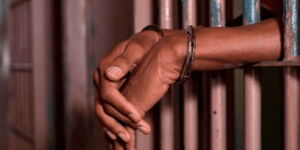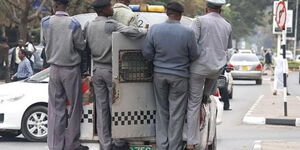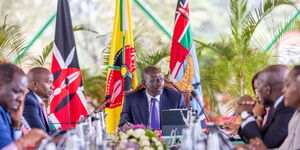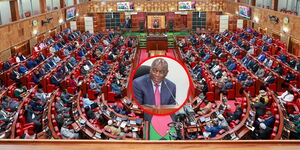Kenya narrowly avoided a second major crisis as police thwarted another attempt to burn down Parliament just two days after protesters stormed the building.
Interior Cabinet Secretary Kithure Kindiki revealed the details while addressing the National Assembly Committee on Administration and Internal Security on Thursday, September 26, exposing the gravity of the threat the country faced during the Finance Bill protests in June.
Kindiki disclosed that on June 27, at 4 am, a suspect carrying fuel was apprehended outside Parliament, intending to set the building ablaze. This disturbing incident came hot on the heels of the violent invasion of Parliament on June 25, where protesters opposing the Finance Bill wreaked havoc.
Why it matters: The torching of Parliament would leave the country vulnerable with one arm of the government paralysed. The overall impact of the act, according to Kindiki, would be equal to an assault on Kenya’s democracy.
Dig deeper: “Two days after we frustrated the efforts to burn Parliament and kill members. We arrested a suspect outside Parliament at 4am carrying fuel intending to go and raze down Parliament,” Kindiki told the committee.
However, Kindiki refrained from providing further details on the identity of the individual or whether formal charges had been pressed.
A spot check by Kenyans.co.ke, has not shown anyone charged in connection with the attempted arson, and the whereabouts of the suspect remain unknown.
Parliament invasion: Parliamentarians who were present during the initial invasion described the terrifying experience, with many admitting they feared for their lives. Several MPs, particularly from the government side, were reportedly evacuated in ambulances to evade the wrath of the mob. The Finance Bill had ignited widespread anger across the country, culminating in this audacious assault on the heart of Kenya’s democracy.
Security at the time was woefully inadequate. A handful of officers stationed at Parliament struggled to contain the swelling crowd as protesters breached the perimeter, gaining access to the precincts.
The invasion came as a shock to the nation, especially given Parliament's status as a symbol of authority and governance. Protesters easily overpowered the security detail, forcing their way inside the building, leaving a trail of destruction in their wake.
The protesters’ fury was largely directed at the passing of the Finance Bill, which proposed new taxes and was seen as adding further burdens to already struggling Kenyans. The situation quickly spiralled out of control as rioters targeted government institutions, and by the time calm was restored, a section of the House had already been torched.
Here is the video:
What the government is saying: Kindiki compared the attack to the infamous January 6, 2021, riots at the US Capitol, stressing the need for more robust security measures around Parliament. His comments during the Committee hearing pointed to the critical role that police played in preventing what could have been an even worse scenario.
Yet, despite the police successfully thwarting this second attempt, many Kenyans remain on edge, fearing that similar incidents could occur again.
“The characters who came to Parliament were not coming for fun,” asserted Kindiki.
Kindiki alleged, “They were coming to burn Parliament and kill people. They were coming to cause grave harm.”
The scale of the unrest has led to a broader reckoning with the government’s response to the protests. Human rights organisations have since released damning reports detailing widespread police brutality and enforced disappearances during the June 25 protest.
Amnesty International and other groups documented the deaths of six protesters and the disappearance of dozens more. In total, 61 fatalities were recorded in relation to protests throughout 2024.
These grim statistics have only fuelled public anger, as questions about accountability and justice for the victims continue to mount. The Kenya National Commission on Human Rights (KNCHR) confirmed that over 300 people were illegally detained during the June 25 protest, while 72 people remain unaccounted for.












